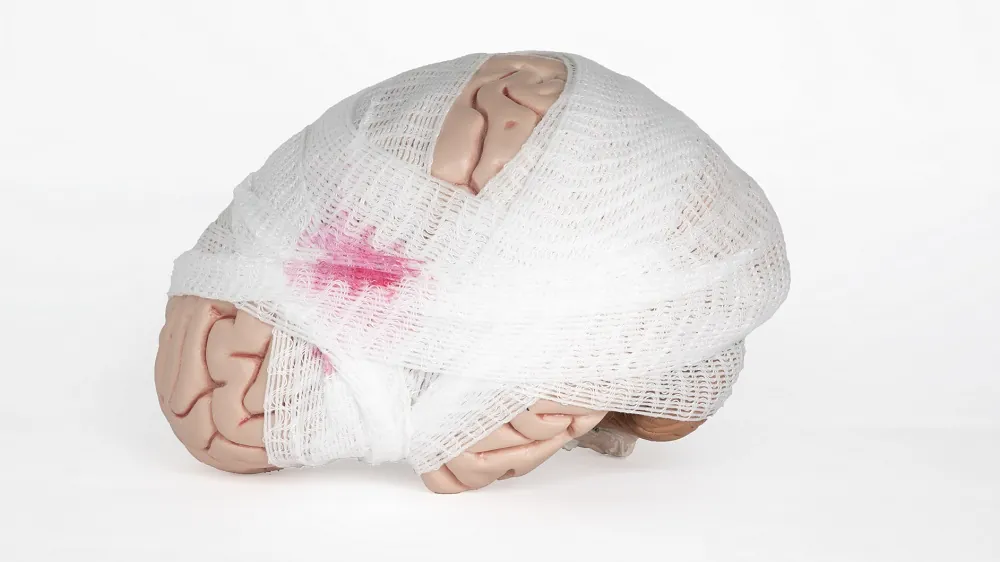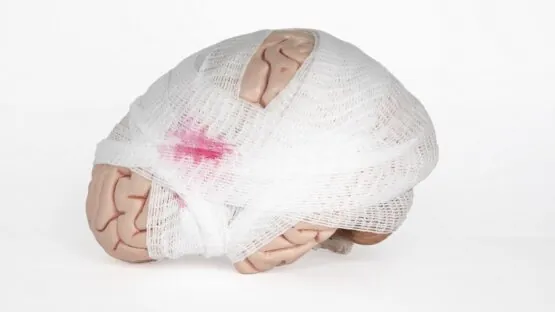A new study suggests that the gene variant APOE4 promotes Alzheimer’s disease by increasing gliosis, but this effect can be blocked by inhibiting the protein HMGB1 [1].
The dreaded E4
While scientists still do not know the precise causes of Alzheimer’s disease or how to treat it, a person’s APOE gene variant is highly predictive of whether that person eventually gets the disease. APOE codes for a protein that is central to the metabolism and transport of cholesterol and other lipids. Most people have two APOE3 alleles. People who happen to have APOE2 tend to get Alzheimer’s less, while for people with APOE4, it’s quite the opposite.
One APOE4 allele raises the risk of Alzheimer’s slightly, but people who are homozygous for APOE4 are in much greater danger [2]. How exactly APOE4 increases Alzheimer’s risk is still a mystery, but this new study published in Cell Reports offers a hint.
Recent studies show that APOE4 promotes gliosis. This process usually happens following a brain injury caused by trauma, infection, or other stressor and involves astrocytes and maintenance-performing brain cells (microglia) proliferating and growing in size to form a barrier that would mitigate the spread of damage. However, this protective effect comes at a price: the activated glial cells form a “glial scar” that can impair normal brain function. Excessive APOE4-driven gliosis is a known driver of neurodegeneration in Alzheimer’s [3].
APOE4 works via HMGB1
The researchers created a mouse model of Alzheimer’s that is prone to tauopathy, the abnormal accumulation of tau protein that is one of the disease’s hallmarks. These mice were also homozygous for either APOE3 or APOE4 human alleles. At 10 months of age, APOE4-carrying mice displayed much more neurodegeneration and more pronounced tau pathology than the APOE3 group. They also showed increased signs of gliosis. Hippocampal volume, which decreases in Alzheimer’s, was inversely correlated in APOE4 mice with glial coverage area, suggesting that gliosis indeed exacerbates neurodegeneration.
The researchers suspected a connection between APOE4 and the protein HMGB1, a nuclear protein known as a major factor in glial cell activation. Under pathological conditions, HMGB1 translocates from the nucleus to the cytoplasm of stressed cells and is then released as a part of the pro-inflammatory damage-associated molecular pattern (DAMP), leading to glial cell activation [4]. APOE4 mice showed much more HMGB1 in the cytoplasm of hippocampal neurons, and its levels strongly correlated with hallmarks of Alzheimer’s.
To initially validate their findings in humans, the researchers analyzed several cortex tissue samples from deceased Alzheimer’s patients. In samples taken from APOE4 carriers, significantly higher HMGB1 translocation in neurons was observed.
The researchers then collected hippocampal interstitial fluid (ISF) from the mice and found much more HMGB1 in samples from APOE4 animals. This suggests that APOE4 promotes the release of HMGB1 from cells, driving inflammation and glial activation. Sure enough, a strong correlation was found between the levels of HMGB1 in hippocampal ISF and the coverage area of activated microglia in the hippocampus.
In an interesting experiment, ISF, either rich or poor in HMGB1, was injected into the brains of healthy wild-type mice. HMGB1-enriched ISF caused a significant increase in the coverage area of microglia, highlighting its role as an intercellular messenger that drives inflammation and neurodegeneration.
The sweet inhibitor
Using two known inhibitors of HMGB1 translocation, ethyl pyruvate and glycyrrhizic acid, the researchers showed that a short-term treatment results in the decreased activation of microglia and astrocytes, while a long-term treatment completely blocks the detrimental effects of APOE4 on tau pathology, neurodegeneration, and myelin deficits; the treated APOE4 mice did not differ in this regard from APOE3 mice. The treatment also diminished disease-associated populations of astrocytes and microglia and increased the number of those cells with the protective phenotype.
Both of these small molecules are classified as generally regarded as safe by the FDA and can cross the blood-brain barrier in humans. Glycyrrhizic acid is also the main sweet-tasting ingredient in licorice root.
Alzheimer’s studies in mice are inherently problematic, since unmodified mice don’t get Alzheimer’s. All mouse models of the disease are imperfect, and this particular one, as the researchers note, involves a much more aggressive tauopathy than what is observed in Alzheimer’s patients. Further research is needed to validate the relevance of this exciting discovery for humans.
Literature
[1] Koutsodendris, N., Blumenfeld, J., Agrawal, A., Traglia, M., Yip, O., Rao, A., … & Huang, Y. APOE4-promoted gliosis and degeneration in tauopathy are ameliorated by pharmacological inhibition of HMGB1 release. Cell Reports.
[2] Corder, E. H., Saunders, A. M., Strittmatter, W. J., Schmechel, D. E., Gaskell, P. C., Small, G., … & Pericak-Vance, M. A. (1993). Gene dose of apolipoprotein E type 4 allele and the risk of Alzheimer’s disease in late onset families. Science, 261(5123), 921-923.
[3] Shi, Y., Manis, M., Long, J., Wang, K., Sullivan, P. M., Remolina Serrano, J., … & Holtzman, D. M. (2019). Microglia drive APOE-dependent neurodegeneration in a tauopathy mouse model. Journal of Experimental Medicine, 216(11), 2546-2561.
[4] Wang, M., Gauthier, A., Daley, L., Dial, K., Wu, J., Woo, J., … & Mantell, L. L. (2019). The role of HMGB1, a nuclear damage-associated molecular pattern molecule, in the pathogenesis of lung diseases. Antioxidants & Redox Signaling, 31(13), 954-993.




